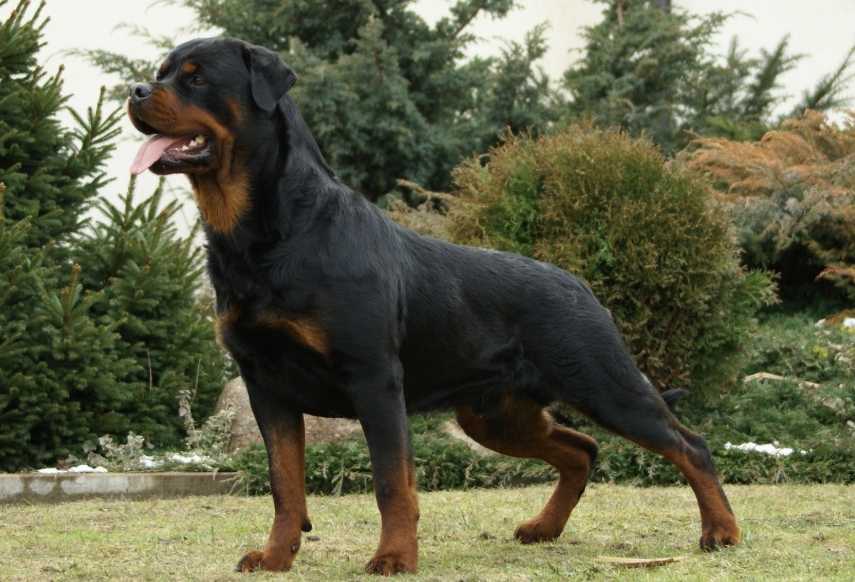Since there is no reliable data on how the ancestors of modern Rottweilers appeared in Germany, it can only be assumed that large, balanced and strong butcher dogs could accompany the herds of the armies of the Roman Empire in their steady advance across Europe. In turn, large Molossians came to Rome from Asia, where they have long lived in Zoroastrian families, guarding houses and livestock. The area that gave the name to the breed was called the land of Flavius in ancient times. Around 260 AD. the Romans left it, pushed back by numerous warlike Swabian tribes.
Roman soldiers left the territory of modern Germany, but their dogs remained and were transformed into a variety of breeds, depending on the working purpose and personal conformation preferences of their breeders.

Breed named after the city
On the banks of the Neckar, on the site of one of the ancient Roman military camps, a city arose over time. It got its name from the color of the red tiles quarried during the construction of the temple (Rote Weil). She once adorned the Roman baths and was found during the construction of the first church in the city. Over time, the name of the city also became the name of the breed of butcher dogs bred in it.
The favorable location at the crossroads of trade routes made Roteval a prosperous city. In those days, cattle was driven to the place of sale, so to speak, on their own four. It was very difficult without the help of dogs. It was the butcher dogs, many of which already had a characteristic black and tan color, endurance and balanced temperament, that made it possible to control the movement of the herd to the place of sale or slaughter.
The remarkable mind and stern disposition, which the butchers’ dogs were famous for, were known far beyond Roteval. Lovers of drinking after a successful deal, butchers often hung wallets with money around the neck of their dogs, and they securely kept their earnings not only from strangers, but sometimes from the most drunken owner, delivering them home safe and sound. They dragged carts loaded with meat or milk, helped drive cattle, which ordinary shepherd dogs could not always cope with.
Decrease in quantity
However, as the railroads developed, the number of Rottweilers began to decline sharply. It would seem, what is the connection? BUT the point was that as the railway lines spread across Germany, the need for cattle dogs disappeared. Butchers no longer needed butchers – there was a ban on cattle driving on foot and now animals were transported by rail. And in 1882, only one butcher dog participates in the Heilbronn exhibition …
The breed was saved by its remarkable service qualities – courage, the ability to actively resist a person. The most famous case is when the police officer’s dog helped him call a group of violent sailors to order. In fact, the ability of butcher dogs for a variety of police service saved the breed, giving it a new chance for existence and development. Butcher dogs already in 1910 earned the right to be called service dogs.
Breeds related to the Rottweiler include Doberman, Black Russian Terrier, Beauceron, Swiss Mountain Dogs. And if the blood of the Rottweiler rushed to the ancestors of modern blacks on the territory of Russia, then the rest of the breeds developed in parallel in neighboring regions of Europe and have many similar features of the exterior and character.

The United German Rottweiler Club was formed in 1921 and still exists today. With German solidity, the club developed the first breed standard, outlined the ways of its breeding and development. Gradually, the requirements of the standard become more and more stringent in terms of coat type and color, size, as well as anatomy and movements. A height limit is set, and the optimal size for males is 65-66cm, and for females – 63cm.
The Rottweiler is one of the few breeds in which there is a kerung – a comprehensive assessment of exterior and working qualities. Growth varieties are described, the main emphasis is on strong, agile and hardy dogs, capable, if necessary, of carrying out police and military service. The fashion for heavy overloaded Rottweilers has passed and the modern dog of this breed is more of an athlete than a heavyweight.

